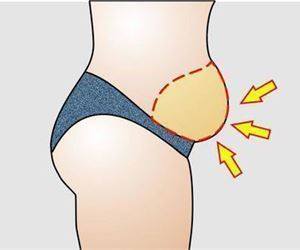Not everyone is looking for the cheapest places to live, but if you are tired of the big city hustle and bustle and looking for a smaller place, living in a budget-friendly town is definitely an added bonus.Small towns come with numerous benefits, from the lighter traffic to the friendlier and tighter community and more leisurely pace of life.
But, perhaps the biggest perk of all, is the low cost of living.To have a better picture of what small-town living is all about, we’ve made a list of the cheapest small towns to live in the United States, based on factors such as population, income, housing, utilities, healthcare, groceries, and other goods and services, as analyzed by the Council for Community and Economic Research’s (C2ER) in 269 urban areas.Needless to say, you need to consider what’s best for you before you pack and head to one of these small towns, no matter how attractive the financial component might be.
While a low cost of living might simplify your life in numerous ways, a small town might not provide the same job opportunities, paychecks or leisure activities as a big city. To make sure the town is what you need, consider visiting it first and then make a decision as to relocating there or not. Here are the 12 cheapest small towns you should consider.
Benton Harbor, Mich.

Cost of living: 12.6% below national average
City population: 9,843
Median household income: $21,916 (U.S.: $65,712)
Median home value: $63,300 (U.S.: $240,500)
Unemployment rate: 6.0% (U.S.: 6.0%)
Located near Lake Michigan, around 50 miles west of Kalamazoo, Benton Harbor is one of the most affordable small towns in the United States. It is mainly known for being home to Whirlpool (WHR), the global home appliances manufacturer, but there's more to it than that.
Benton Harbor is one of those small towns where the cost of living is well below the national average, 12 percent less to be more precise. If you're looking for a cheap home, you should know that the average real estate price is 74% lower than the national median! In addition, housing costs, as well as rents and mortgages, are 32 percent lower in this small town, as reported by C2ER's Cost of Living Index.
Hutchinson, Kan.

Cost of living: 13.4% below national average
City population: 40,914
Median household income: $46,927
Median home value: $96,300
Unemployment rate: 4.8%
Located on the Arkansas River, Hutchinson, called Hutch by the locals, stands out as one of the cheapest small towns in the United States due to its extremely low housing costs, the lowest, actually, among all cities on our list. These are 41,3 % lower than the U.S. average, with rents 43% below the national average and real estate prices 40% lower than the rest of America.
In terms of the cost of living, residents of this former railroad town don't pay much less than an average American, but they do pay 7 percent less for groceries than the U.S. average.
Meridian, Miss.

Cost of living: 14.1% below national average
City population: 37,848
Median household income: $32,422
Median home value: $83,300
Unemployment rate: 6.7%
Meridian was revived from 1890 to 1930 from the ashes of the Civil War. With nine registered historic districts, including the Highland Park Dentzel Carousel, it is also known for being the home of many talented people, among whom Jimmie Rodgers, known as the âFather of Country Music.â
The young generation might not have so many career opportunities as the Naval Air Station Meridian and Key Field are two of the largest employers in the town. But for the senior population, it is a great place to be spending retirement years as the cost of living is 14.1% below the U.S. average. What really differentiates Meridian from other affordable small towns is its extremely low housing expenses, which are a third lower than what the rest of America pays.
Burlington, Iowa

Cost of living: 14.3% below national average
City population: 24,974
Median household income: $47,540
Median home value: $93,200
Unemployment rate: 6.9%
Located on the Mississippi River, Burlington is a small and friendly town, perfect for raising a family or spending your golden years. The main employers in the area include Great River Health System and American Ordnance, an ammunition manufacturer for the U.S. army.
Burlington residents pay around the same amount for healthcare costs while utilities cost 12 percent more than the U.S. average. But don't let that fool you. The cheap housing cost is what truly makes the difference here. These are 35 percent below the national average, with rents almost 40 percent cheaper than what the average American has to shell out.
The average income might be 28 percent below the national average but the 60 percent discount on median home values well than makes it up for it.
Ponca City, Okla.

Cost of living: 14.5% below U.S. average
City population: 24,134
Median household income: $44,043
Median home value: $96,600
Unemployment rate: 5.8%
Ponca City dates back to the times of the pioneers when there was a dire need for a human settlement near the Arkansas River and a freshwater spring. Soon after its establishment, the area became popular for drilling companies and it has remained so to this very day, with energy companies such as Schlumberger (SLB), ConocoPhillips (COP) and Phillips 66 (PSX) having activities in the area.
When it comes to living in Ponca City, the costs are some of the lowest in all America. More than that, the housing expenses are well below the national average, more specifically two-thirds lower, at $96,600 median value compared to the national median of $240,500.
Healthcare is also another category of less expensive services, 12.4 cheaper than what the average American is required to pay.
Martinsville, Va.

Cost of living: 15.2% below national average
City population: 12,852
Median household income: $34,371
Median home value: $87,700
Unemployment rate: 9.8%
Martinsville is quite popular among car race fans, as it is the home of the Martinsville Speedway, which racing enthusiasts simply adore for its adrenaline-pumping twists and turns.
Apart from this NASCAR fame track, Martinsville is also a manufacturing town, with major companies such as Eastman Chemical (EMN) and Monogram Foods being among the main employers in the area. Its suburban feel but also inexpensive housing costs, 32 percent below the U.S. average, make it a very affordable place to live. Add the 6 percent cheaper gasoline gallon to the list and you've got all the more reason to choose this small but budget-friendly town.
Salina, Kan.

Cost of living: 16.4% below national average
City population: 46,998
Median household income: $50,490
Median home value: $129,300
Unemployment rate: 4.3%
Located at the intersection of Interstates 70 and 135, about 90 miles north of Wichita, Salina offers its residents a suburban feel for a very low cost. The main industries in Salina are manufacturing and healthcare, with companies such as Schwan's Company, Great Plains Manufacturing, and the Salina Regional Health Center.
Even if small. Salina can also boast several educational institutions such as the University of Kansas School of Medicine Salina Campus and Kansas State University Polytechnic Campus. In terms of housing costs, according to C2ER's Cost of Living Index, Salina is two-thirds cheaper than the national average while grocery expenses are 8 percent less than what the average Americans pay.
Statesboro, Ga.

Cost of living: 16.8% below national average
City population: 31,495
Median household income: $29,203
Median home value: $113,600
Unemployment rate: 5.8%
Statesboro is the proud home of Georgia Southern University but it is also a small town with incredibly low costs for its residents. Due to being a college town, there are all sorts of cultural events organized there and various cultural attractions such as a performing arts center, symphony, museum, planetarium and botanic gardens.
The main employer is the university, but the manufacturing industry also has an important role in the town's development. With housing costs around 32 percent below the U.S. average and healthcare 14 percent cheaper, Statesboro is a budget-friendly town, with a family-friendly community.
Dental costs are also cheaper, according to the C2ER's Cost of Living Index, maybe one of the reasons people seem to be smiling more in Statesboro.
Tupelo, Miss.

Cost of living: 19% below national average
City population: 38,271
Median household income: $50,694
Median home value: $145,400
Unemployment rate: 5.6%
Tupelo is well known among rock'n'roll fans as being the birthplace of Elvis Presley, one of the reasons it hosts the Elvis Festival every year in June. If rock'n'roll is not your favorite music, then you can listen to the beautiful orchestrations of the North Mississippi Symphony Orchestra, one of the main attractions on Tupelo's cultural scene.
But one of the most important things in Tupelo is the extremely low cost of living. According to the Cost of Living Index, housing expenses are 34 percent below the national average, while household bills are 12 percent cheaper than what the average American pays while groceries are 16 percent lower. Downtown Tupelo has many cute stores and restaurants, with just the right amount of things to do.
Richmond, Ind.

Cost of living: 19.1% below national average
City population: 35,539
Median household income: $39,724
Median home value: $88,400
Unemployment rate: 5.1%
Richmond is famous for its contribution to jazz music, with some of the first jazz records recorded with Richmond's Gennett Record, including some feats of Hoagy Carmichael, Duke Ellington and Louis Armstrong.
Apart from its special relationship with jazz music, Richmond also boasts several high-quality institutions, including Indiana University East, the Earlham School of Religion and the Bethany Theological Seminary.
This small town is also one of the cheapest to live in, with residents paying 34 percent less on housing than the national average. Rent is around 50 percent below the U.S. average while the median home value is 26 percent less.
Healthcare services are also affordable, with a visit to the ophthalmologist costing half the national average.
Muskogee, Okla.

Cost of living: 19.2% below national average
City population: 37,624
Median household income: $38,194
Median home value: $92,300
Unemployment rate: 6.3%
Muskogee is a place full of history and culture, all packed into a small college town. There are four prestigious institutions here, including the Oklahoma School for the Blind, as well as six museums and the Oklahoma Music Hall of Fame.
The small town provides a lot of industrial job opportunities, with some of the major employers in the area including paper company Georgia-Pacific, the U.S. Department of Veterans Affairs and a VA medical center.
But the best part about Muskogee is its super low cost of living, with the housing costs 35 percent cheaper than the U.S. average being the biggest perk. Residents also get to pay less than the average American pays for groceries, healthcare and transportation.
Pittsburg, Kan.

Cost of living: 19.4% below U.S. average
City population: 20,171
Median household income: $34,956
Median home value: $88,500
Unemployment rate: 4.4%
The award for the cheapest of the cheapest small town in the United States goes to Pittsburg, Kan., according to the analysis performed by C2ER's Cost of Living Index.
Just a two-hour drive from Kansas City on Route 69, Pittsburg offers an urban-suburban mixed feel as it is home to numerous restaurants, bars, parks and coffee shops but these are all less crowded than the ones in bigger cities.
In its earlier days, the town was known for its coal industry. Nowadays, the presence of the Pittsburg State University has turned it into an educational and cultural hub. Actor Gary Busey and Brian Moorman, retired two-time Pro Bowl punter for the NFL's Buffalo Bills are among the former alumni of Pittsburg University.
The average income in Pittsburg is $31,000 less than the U.S. median income but the $152,000 cheaper median home prices more than compensate for that. Housing expenses are 37.2 below the national average and residents here pay less for many other things, including a visit to the doctor or to the beauty parlor.






































